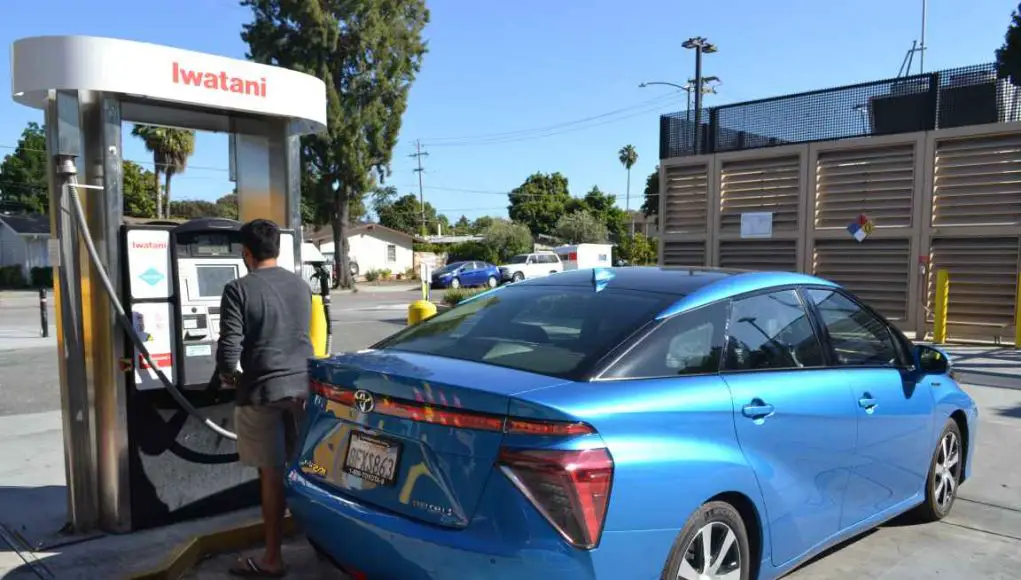It’ll be 12 weeks and counting since an explosion at an Air Products Hydrogen manufacturing and distribution facility left half of Northern California Fuel Cell Vehicle owners with little to no places to fill up.
For all of Summer 2019, Fuel Cell Vehicle owners and lessees in Northern California have been left with limited options for where they can fill up their Hydrogen tanks. Only recently (Aug. 30, 2019) did Air Products drop an update for interested parties with a stake in the Hydrogen economy how progress was moving along and unfortunately it was much of the same, no real specifics and, as mentioned, no real hard date for when FCV drivers can expect any sort of a return to normal.

Here are the bullet points Air Products laid out for us.
- Air Products has completed all actions–prescribed to date–by the Santa Clara Fire Department (SCFD).
- Air Products has further undertaken our own additional preventive and corrective measures in readiness to fully resume fueling activities.
- At this time, we are awaiting further inspections and direction from the SCFD to be able to resume fueling and return to full operations.
As of this writing, of the 13 stations in Northern California not counting Tahoe, literally only a handful are fully operational with regular fillups.
Iwatani stations in San Ramon, Mountain View, and West Sacramento have all been stalwarts of reliability in these trying times, with scheduled fill-ups of their storage tanks at their facilities with some stations like Mountain View manned with a service attendant to facilitate the flow of FCV cars coming in.
It’s been an otherwise dismal experience these past few weeks with FCV owners grasping at any opportunity to fill-up when Hydrogen does become available.
Honda, Toyota, and Hyundai FCV owners have dipped generously into their allocated rental allowance and then some presumably with all three manufacturers extending extra allowance days as needed.
According to the latest figures from H2-CA.com, with only 37 H2 stations in all of California, at any one time, at best, half are up and running.

This type of slow and measured response just goes to show how new and finicky the H2 infrastructure really is. With just a small percentage of the market embracing alternative energies, let alone Hydrogen, there’s little to no incentive for Hydrogen manufacturers to stick their necks out to really compete against the H2 manufacturing juggernauts that is Air Products.
Hydrogen continues to gain positive press around the world with countries, counties, and cities investing in large and grandiose Hydrogen trains, buses, and fleets of Hydrogen cars.
For example, Toyota has committed hundreds of FCV’s, Mirais, to shuttle passengers and athletes around the Olympic Village.
Yet, the greater automotive media fails to shed a light on the current situation of arguably the largest Hydrogen economy on Earth, California’s subsidized Hydrogen station infrastructure and it’s reliability or lack thereof.
Just this past weekend a freak shutdown of some sort at the Harris Ranch hydrogen station, one of two hydrogen stations between Northern and Southern California, left many Fuel Cell Vehicle owners who planned on using their FCV’s for some Labor Day Weekend traveling, had them resorting to using their regular ICE cars or rentals.
Air Products needs to be more transparent on how they’re going to make station deliveries 99.9 percent reliable and, more importantly, how they plan to prevent this type of explosion of biblical levels from ever happening again.
In addition, California must inject more money to incentivize Hydrogen production on the double if they want a practical Hydrogen future, the likes of which should be the envy of the world.
If California can’t make it happen, can it happen anywhere else?
When do you think this Hydrogen shortage situation will normalize? Let me know in the comments below.




Thanks for the frank and honest reporting. It is true that the infrastructure is somewhat fragile and many FCEV drivers are doing their best to cope (some better than others), with help from Toyota, Honda and gas suppliers doing what they can. However, we’re only in our 4th year of FCEVs production and, unfortunately, the whole system (cars, stations, suppliers) can only be tested by going through this initial phase.
You write “there’s little to no incentive for Hydrogen manufacturers to stick their necks out to really compete against the H2 manufacturing juggernauts”, but in fact Air Liquide and Air Products announced that they are investing in large scale liquid hydrogen manufacturing to address the needs for hydrogen FCEVs (see links below). Unfortunately, because such plants take many months to construct, we will have to deal with possible future problems until they are online.
And as you have reported about Nikola Motor and their Class 8 trucks, they will be another source for hydrogen in the future when they build out their hydrogen stations.
https://ngtnews.com/new-150-million-air-liquide-plant-to-support-california-fcev-market#.XAMBfvwcvv8.twitter
https://seekingalpha.com/news/3421224-air-products-build-second-california-liquid-hydrogen-production-plant
Thank you for the reply, links, and the partnership insight between AP and Air Liquide.
https://www.google.com/amp/s/amp.scmp.com/business/companies/article/3025495/china-sets-sight-leapfrogging-us-and-japan-fuel-cell-vehicles